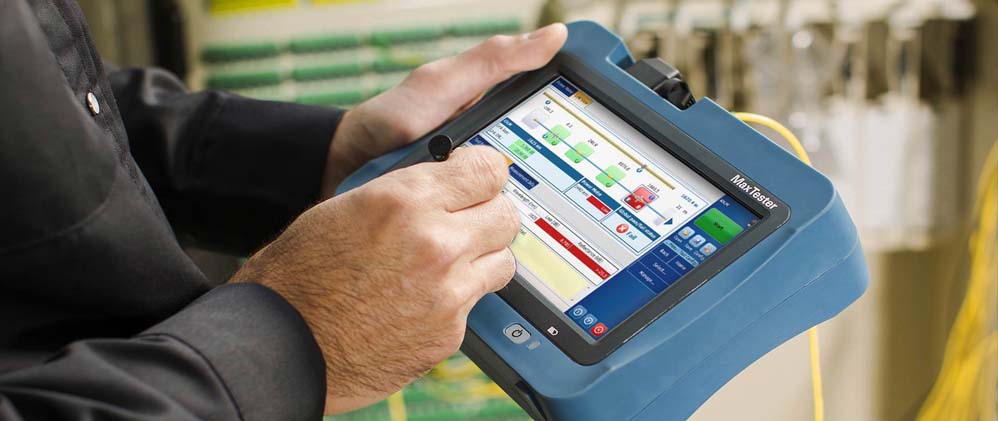
Kami menyediakan jasa OTDR Test Service atau Jasa Tes OTDR dengan cakupan area di seluruh Indonesia. Silahkan hubungi kami disini untuk Jasa Tes OTDR atau OTDR Test Service. Untuk jasa dan layanan lainnya dari kami bisa dilihat disini.
During installation and commissioning, optical fibers are usually tested with a field-portable optical time-domain reflectometer (OTDR) operating at the same wavelength(s) as the traffic signals the fiber will transport. This industry-accepted practice verifies the fibers propagate signals according to known attenuation characteristics and that fusion splices and connections are within accepted limits. Since the fibers are not in service or are “dark,” there are no traffic signals to consider or interfere with. Similarly, dark fiber monitoring can also be referred to or classified as out-of-service testing.
In-service or live fiber testing by definition uses an out-of-band wavelength and requires a filtered wave-division multiplexer (FWDM) to combine the OTDR test signal and traffic signal into a single fiber. The FWDM not only combines the OTDR’s signal into the fiber under test, but it also filters and directs the backscattered signal back to the OTDR for processing. Likewise, the FWDM also prevents the OTDR signal from reaching the transmission equipment.
In May 2000, the ITU-T L.41 recommendation identified both 1625-nm and 1650-nm wavelengths for in-service maintenance of transmission networks operating at 1310-nm or 1550-nm spectrum. This recommendation was renumbered to L.301 in February 2016 without modification and remains in force today. With the advent of DWDM technology, the ITU-T in parallel created the G.697 recommendation in June 2004 to focus on the optical monitoring aspects for optical signals implementing bit rates up to 10 Gbps using non-return to zero (NRZ) or return to zero (RZ) line coding, as well as bit rates up to 40 and 100 Gbps using advanced modulation formats.
